
Local SEO Tips: A Comprehensive Guide to Attract More Local Customers
Hey there, fellow local business owners!
Ever feel like you're shouting your amazing deals into the void of the internet, hoping someone, anyone, hears you? You know SEO is important, but when all you want are customers in your own neighborhood, it can feel overwhelming.
Here's the thing, you don't need to be a tech wizard to attract local customers. Local SEO is your secret weapon for turning online searches into real-life foot traffic (or phone calls, or online orders – you get the idea).
Let's assume someone types “best coffee shop near me” into their phone, and there you are, beaming back at them from the top search results. Pretty sweet, right?
If you're a local online business owner and wondering how to optimize your business for local SEO, no worries. This guide is your crash course in local SEO. We'll share 7 proven local SEO tips to optimize your website for local searches, claim your online listings like a boss, and get your happy customers singing your praises online.
Excited? Awesome.
Let's get started!
What is Local SEO?
Alright, let's break down this Local SEO thing in simple terms.
Let's assume, you've got a shop in your neighborhood. You want the people nearby to find you easily when they search for something you offer, like “best coffee near me” or “local hardware store.” That's where Local SEO comes into play.
SEO stands for Search Engine Optimization, basically, it's all about making your website more visible when someone searches for stuff online. But here's the kicker: Local SEO zooms in on your neighborhood. It's like putting a spotlight on your business in your own backyard.
How Does Local SEO Work?
Well, it involves tweaking your website, your online listings, geolocation, keyword intent, and other digital stuff to make sure Google and other search engines know you're right there, ready to serve the folks nearby.
For instance, when we search for a specific product or service with the location name, we get a search result like the below one. This is known as Map Pack.
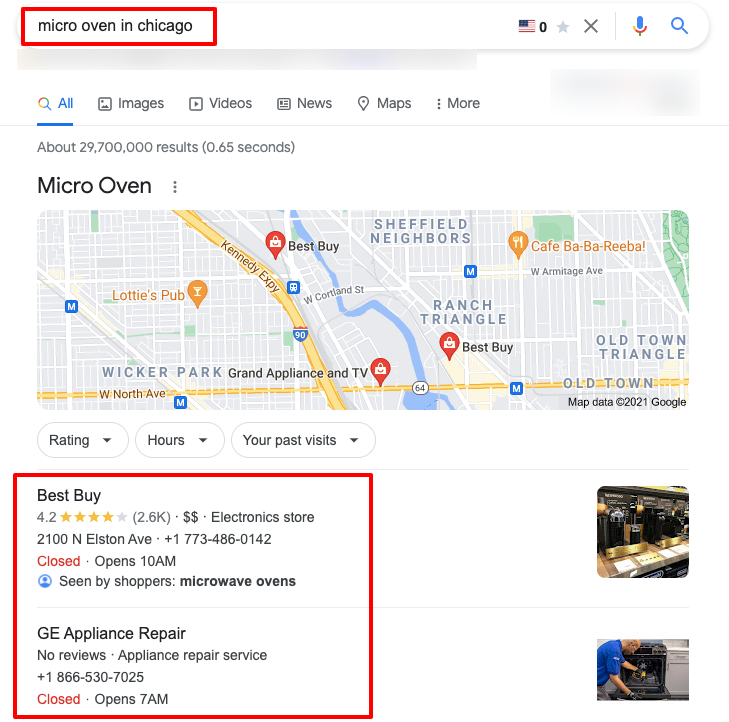
If a user searches for a product or service + location, the search engine knows that the search has local intent.
Having said that if you don't mention the location, even then search engines can assume it has local intent. Search engines use your IP address to find your location.
Here is an example:

This is how the local SEO works.
Think of it as planting a signpost with your business name and address on every virtual street corner. When someone in your area searches for what you offer, Local SEO helps them find you faster than you can say, “I'll take a double-shot latte, please!”
Are you running an online store? This guide on eCommerce SEO helps you increase traffic on your website.
SEO vs Local SEO- What's the Difference?
Both SEO (traditional/organic SEO) and local SEO focus on improving your rankings in online search results so that more people can find, contact, and purchase from your business. Having said that there are certainly some differences between organic SEO and local SEO.
Here’s the difference, while organic SEO focuses on improving your site’s visibility on a national or global scale, local SEO prioritizes connecting local searchers with you in your area. Organic SEO has less to do with location and more to do with whether or not your website is relevant for certain searches.

To make it more clear, here we are going to show the differences using a table. Let's go…
| Local SEO | Organic SEO | |
|---|---|---|
| Devices | Mainly Smartphone | Computer, Smartphone |
| Customers | Local customers | Online customers from everywhere |
| Search Terms | Keyword + local component | Keyword |
| Search Intent | To find relevant locations, products or services nearby | To find relevant information, product, or service |
| Search Results | Locations and their products/services, local 3-pack with reviews, etc | Websites in general featured snippets, and grids |
| Conversions | Route planning, website clicks, phone calls, and offline purchases | Website click, online purchase |
| Conversion Rate | Very high as customers are ready to buy | Only high for the top search results |
| Suitable Business? | Brick-and-mortar stores, and in some cases, online | Businesses that generate sales through the website |
How Do Local SEO and Organic SEO Affect Each Other
There are certain SEO practices that help both local and organic search rankings. For instance, when claiming your business page on local listing directories like Google, Bing, or Apple, you are also adding a link back to your website.
These local listing citations (business name, address, and phone number) help local SEO by telling search engines where you’re located.
At the same time, these count as backlink for your site. And search engines take the number of backlinks into account when they rank websites in search results.
An on-site local SEO (such as writing a locally-focused blog post or updating a page by adding your business’s address) can also help your organic SEO. Search engines like fresh content. So, when you write content for local SEO, it also boosts your organic SEO.
That means when they’re done correctly, both local and organic SEO efforts will help improve your website rankings, but when done incorrectly, both can have a hugely detrimental effect on your digital marketing efforts.
So, put your best effort while optimizing your business for organic or local SEO.
While you want to make sure search engines know what your business and your website are about, it's important to think of those potential customers who are searching for your business.
That being said, don't just optimize so that Google knows what you do. Make sure searchers can find all the information they'll need about your business, such as exact location, hours, services or products, etc.
Why Local SEO Technique is Important for Your Local Business
Local SEO optimization is crucial for any type of online store. The tendency of Google to search before buying anything is getting increased massively day by day.
Searches with local intent are on the rise- with 4 in 5 consumers now using search engines to find local information, and search result information sending a massive 70% of consumers to a physical store.
Nearly half of all Google queries today are local searches. Even when someone performs a typical daily search, the chances that Google shows local businesses nearby remain high.
In the past two years, we’ve seen:
150%+ growth in mobile searches for “___ near me now” (for example, “food near me now,” “gas station near me now”).
900%+ growth in mobile searches for “___ near me today/tonight” (for example, “open houses near me today,” “cheap hotels near me tonight”).
200%+ growth in mobile searches for “Open” + “now” + “near me” (for example, “restaurants near me open now,” “stores open near me right now”).
Apart from these advantages, local SEO has some other benefits, like:
- Cost-Effective Marketing Solution: To optimize your business for local SEO, you don't need to pay much. While it requires time and effort to manage your business information in online directories, you can typically set up local business listings across the web for free with tools like Google Business Profile and Facebook.
- Reaches Customers Who Are Ready to Buy: A whopping 80% of local searches that are performed on mobile devices convert into sales. That means if you can optimize your business for local SEO perfectly, you'll have a huge possibility to get ready to pay customers.
- Delivers More Qualified Search Traffic: Local search can help weed out searchers who aren’t likely to contact your business. That means people who are miles away from you, you're not bothering about them. Instead, through local SEO, you'll get potential customers who are beside you.
That means, if your business is close to where someone is conducting their search, offers services or products they may be searching for, and has optimized local business listings, then you’re more likely to be found by potential customers online.
9 Local SEO Ranking Factors That You Should Know As a Local Business Owner

Local SEO search engine results and ranking variables change constantly due to regular updates. Whether they are affected by NAP, user reviews, or other quality considerations, SEO practitioners should be aware of exactly which factors are responsible for driving rankings in search engine results.
Only those SEO practitioners that understand this can help businesses rank better. The following points are the factors behind local SEO ranking:
- Claim Your Local Business Listings: Be sure to create and maintain profiles on Google Business Profile, Bing Places, and Apple Maps.
- Optimize Your Listings: Use relevant keywords throughout your local business listings, especially in your Google Business Profile.
- Target Local Searches: Search engines consider searcher location, so optimize for keywords with local intent (e.g., “best pizza near me”).
- Build NAP Citations: Encourage mentions of your Name, Address, and Phone Number online, across various directories and websites.
- Cultivate Positive Reviews: Positive online reviews signal trustworthiness to search engines and can boost your ranking.
- Encourage Check-Ins: Motivate customers to check in on social media at your location.
- Maintain Active Social Media: Regularly update your social media profiles to show engagement with your local community.
- Track Review Keywords: Analyze the keywords customers use in reviews to identify areas for improvement in your business.
- Promote Social Sharing: Encourage customers to share your business on social media platforms.
So, these are the main factors for local SEO ranking. As a local business owner, make sure you're familiar with these factors and practice all these local SEO tips for better ranking.
Local SEO Tips: 7 Ways to Optimize Your Business to Target Local Customers

Local SEO is somewhat critical for beginners. Then again if you follow the appropriate set of local SEO tips given by the experts, you'll be able to improve local SEO all by yourself.
To help you out, now, we are going to share 7 local SEO strategies so that you can easily optimize your local business:
- Prepare Your Business for Google Business Profile, Bing Places, and Apple Maps
- Optimize Your NAP Citations
- Research Local Keywords for Your Business
- Optimize Your Business for Local Voice Search
- Optimize On-page SEO for Your Local Business
- Prepare a Link Building Strategy for Earning More Backlinks
- Get Reviews from Your Happy Customers
Now let's make an in-depth analysis of each of the above-mentioned points and start with the first point-
Chapter 01: Prepare Your Business for Google Business Profile, Bing Places, and Apple Maps
In terms of SEO or global SEO, usually, we don't need to optimize our site for Google and Bing separately. But for Local SEO, claiming positions for Google, Bing, and Apple separately is crucial. Because Local SEO is heavily influenced by each search engine’s individual place listings.
So, first, we will show you how you can optimize your business for Google, Bing, and Apple in the most convenient way. Let's start with Google Business Profile.
1.1- Optimize Your Business for Google Business Profile
To optimize your business for local SEO, you need to create an account to Google Business Profile. It's a free and easy-to-use tool for businesses and organizations to manage their online presence across Google, including Search and Maps.
Follow the below steps to create a GBP account for your local business.
Step 01: Sign in to Google Business Profile
- Go to Google Business Profile and sign in with your Gmail credential.
- Then you'll be redirected to the following window. Here you'll need to enter your business name.
You'll have two choices here:
- Create a new business
- Claim and existing business
Start typing, and Google will search for your business in their system.
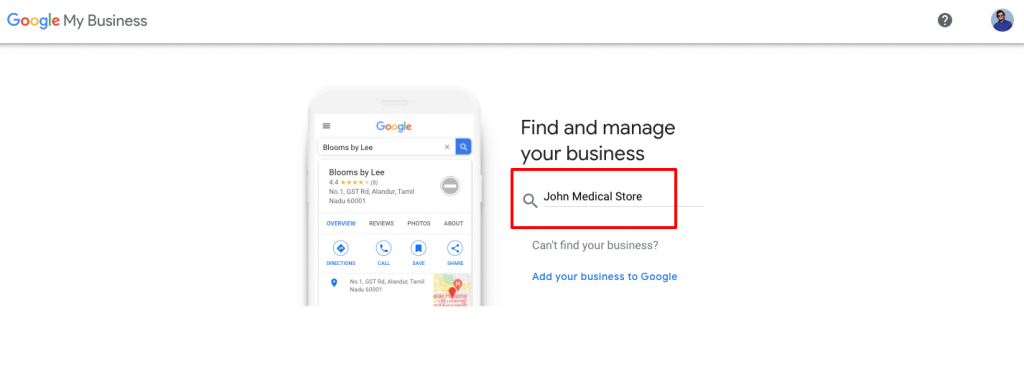
We recommend you to choose- Create a new business. You can claim other existing businesses, however, that's another hassle.
Step 02: Enter Category Name
In the next screen, you'll find an option to input your category name. Choose a category name wisely. The goal behind choosing a category name is to describe your business holistically rather than a list of all the services that it offers, products that it sells, or amenities that it features.
Google will start suggesting you the category names as soon as you start typing the category name.

After entering a category name, click the Next button to go forward.
Step 03: Enter Your Business Address
Now Google will ask you for the address. Enter the address in detail.
If you have a brick-and-mortar business with a storefront, this is easy, just enter your shop address.
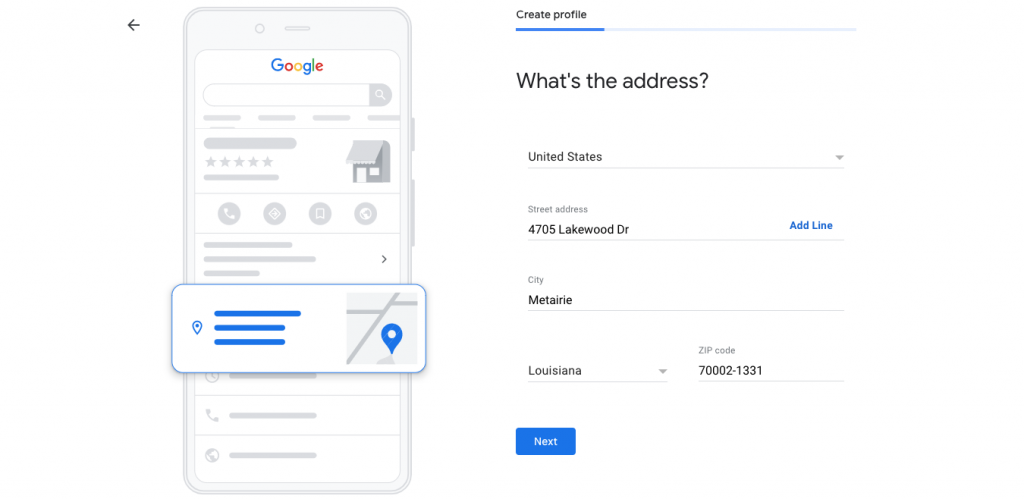
If you don't have a real physical office yet, you can give your home address as your business address. Then press the Next button.
Then you'll face the question- Do you provide deliveries or home and office visits?
That means if you visit or deliver to your customers, you can let them know where you are willing to go.
- If you want to deliver to your customers, choose Yes, otherwise choose No.
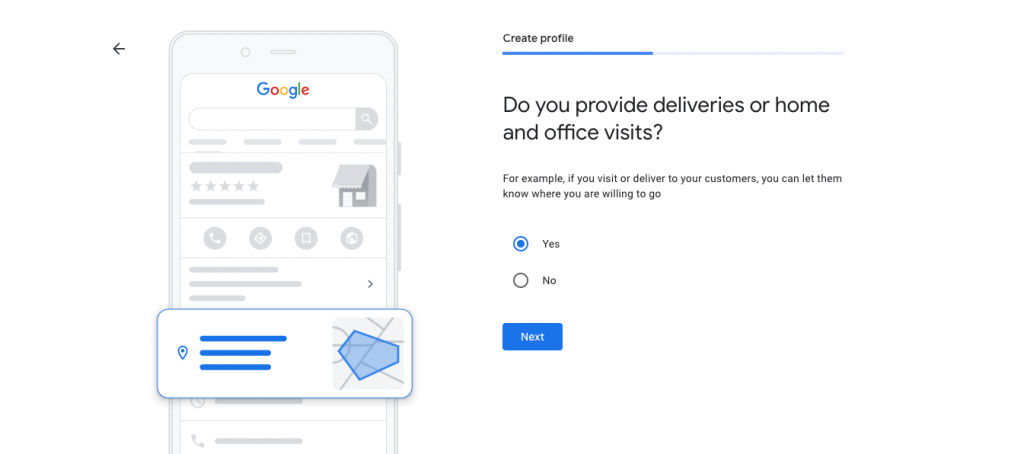
- Now, enter the area names that you want to deliver to. Then press the Next button to proceed.
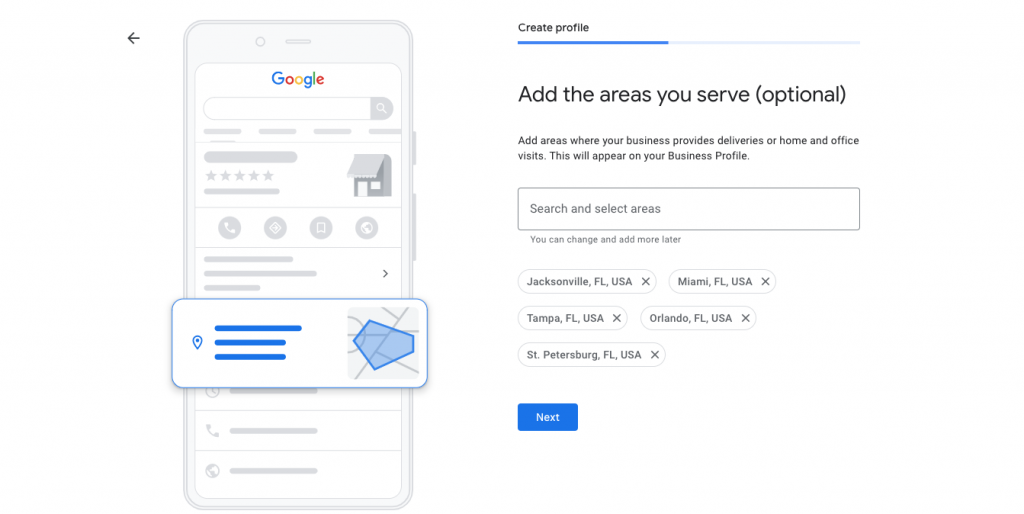
Step 04: Add Contact Details
We're almost there. Here, enter your contact number and website URL if you have any. Otherwise, you can skip this option.
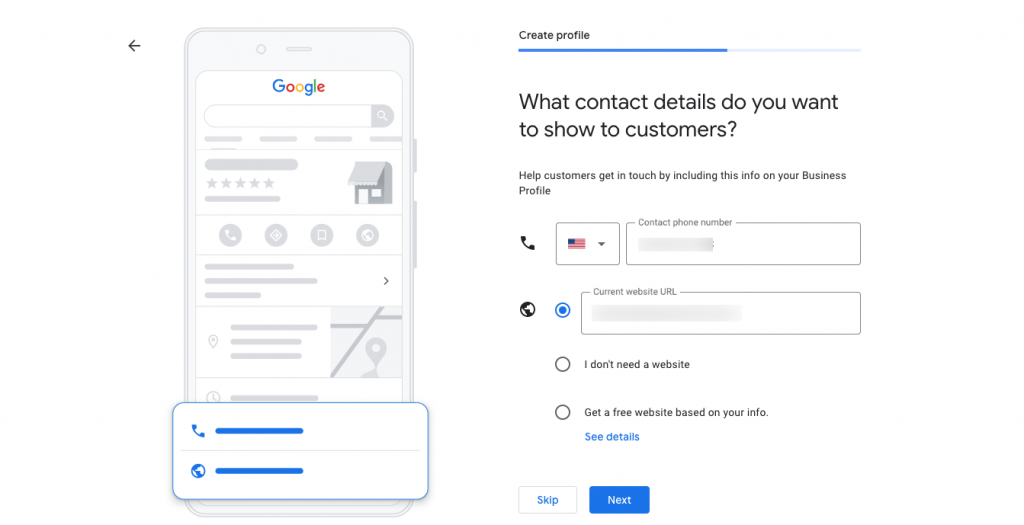
Before your GBP listing goes live, you will need to verify your listing.
This is usually done via phone or postcard- just follow the instructions from Google to verify.
Step 05: Further Customization
In the next window, you'll get some more options to configure. Though these are optional settings, you should configure them all for better results.
You'll find some options like,
- Listing opening days with hours
- Adding more categories
- Uploading some photos related to your business
- Adding any additional phone numbers
- And a few more options like these
- Adding relevant attributes/amenities
That's all! Your GBP account is ready to go.
1.2- Optimize Your Business for Bing Places
Bing Place is just Bing’s equivalent of Google Business Profile.
It's not as important as GBP. Because Bing only has a 7.81% market share in the US. However, when you're serious about your business and want to be ahead of your competitors, you should not miss a single chance to grow more.
To get started, go to Bing Places and hit the “New Users” button if you are already not a registered user.
Step 01: Claim Your Business
Here you'll find two options.
- Import from Google Business Profile now
- Claim or add your business manually
Press the first one if you want to import data from your existing GBP account. If you’re already verified on GBP, do this. Not only is it a time-saver, but it will also reduce the probability of mistakes.
However, here we will show you how to claim your business manually. So, click on the second option.
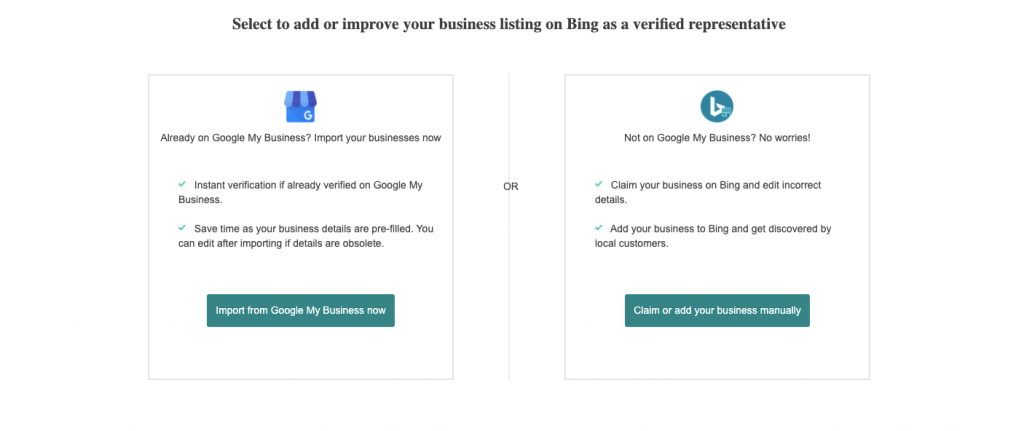
Step 02: Select Business Type
Here are your choices for business type:
- Small or medium business (1–10 locations)
- Chain business (more than 10 locations)
- Online business (no physical locations)
- I manage business listings on my client’s behalf
Let's assume, you have a small or medium business with 1-10 locations. So, choose the first option.
- Then enter the region and business name with the address.
- Now click on the Search button.
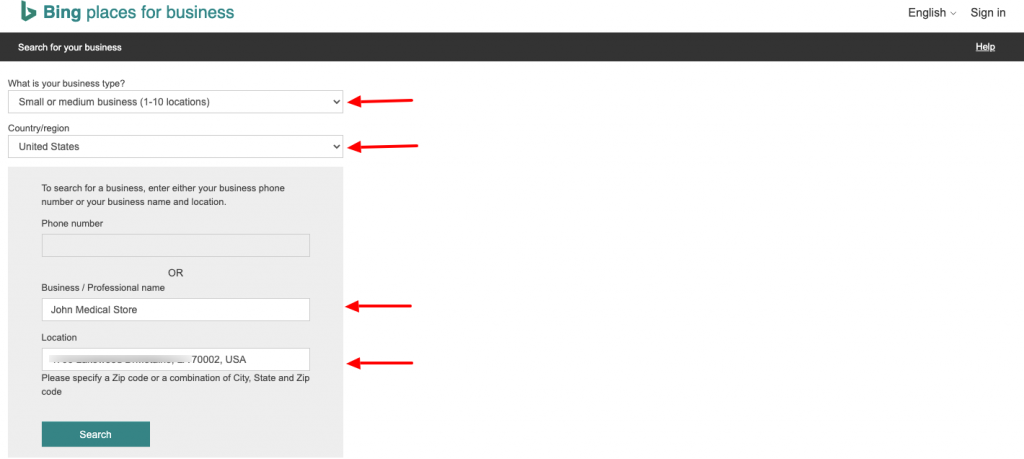
Then you'll find the below screen. Here choose the Create new business option if your business is already not registered.

Step- 03: Enter Your Basic Information
Now you will need to enter your business name, address, website, etc.
After giving all the information correctly, press the Next button.

Step 04: Enter the Business Segment and Category
Choose the segment carefully and tick the box that exactly matches your business type.
Otherwise, hit the “browse” button and select one of the 11 available business segments. Select “I don’t know” if you’re unsure.
Finally, add a short description for your business- sprinkle your keywords throughout, but don’t overdo it.
Step 05: Add Phone, Website, Twitter, Facebook, Yelp, and TripAdvisor links
Bing displays social profile links in their Knowledge Graph panel when people search for your business.
So if you have them, add them.
If not, you can always add them at a later date.
Then finally upload some photos to complete all the procedures. You can add up to 10 photos.
Congratulations! Your business for Bing Places is ready now.
1.3- Optimize Your Business for Apple Maps
You can get your business added to Apple Maps by following the below steps.
Step 01: Visit Places on Maps
- Log in with your Apple ID and password – this is required in order to get submitted to Apple Maps.
- Then go to Places on Maps.
Step 02: Select Your Relationship to Your Business
On the “Add a New Business Page”, which is appear after logging in, you have two options to choose from:
- I’m the business owner
- I’m authorized by the business owner
Step 03: Enter Your Basic Info
Otherwise referred to as the NAP – the business name (N), address (A), and phone (P). As it is with Google Maps local SEO, it’s imperative that this data match exactly your Google business page and the NAP citations on your website.

Step 04: Verify Your Contact Number
After submitting your information, click “Call me now” to trigger a phone call to your business. Over the phone, you will receive a 4-digit code that you will need to enter on the screen.
Step 05: Confirm Your Business Location
Enter your business location and pin the exact place in Map.

Step 06: Confirm Your Opening Hours
Specify your business hours of operation – including if you are open 24 hours.
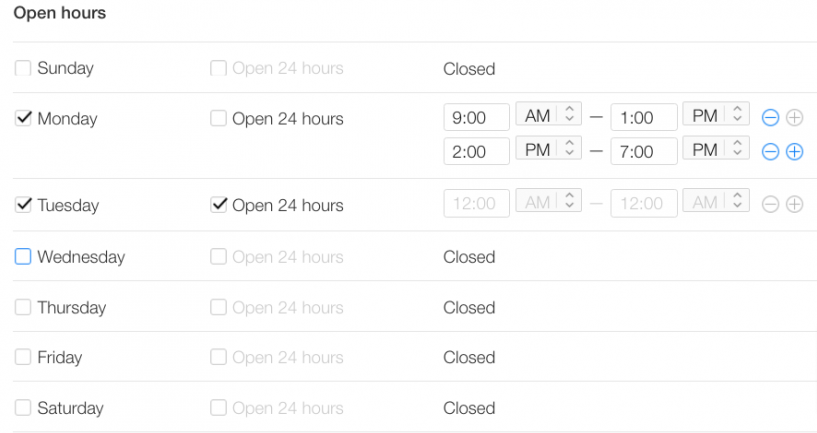
Step 07: Add Your Website and Social Media Accounts
Fill out as many of these details as possible – the more the better – to include your website URL, social media profiles, etc…

After you verify that everything looks good, click “OK” and that’s it.
Chapter 02: Optimize Your NAP Citations
When someone mentions your business online that is called a citation. Usually, these citations are shown including your business Name, Address, and Phone number which is called NAP. NAP citations are like backlinks. If you can build NAP citation correctly, you'll be benefited hugely.

In the same way, if your citations show wrong information, you'll be losing your potential customers. Your NAP citations could be inconsistent in many ways. E.g.,
- Changing business address and not updating previously built citations, directory listings, etc.
- Having a different store address to the company registered address and using both online.
- Using different phone numbers for attribution tracking purposes.
So, you need to make sure your existing citations are correct and consistent.
For doing that we'll be now discussing how to run a NAP audit.
2.1- Run NAP Audits Using a Tool
You can run a NAP audit by using a tool or manually. We will show you both of the ways here. At, first we will demonstrate to you how to run a NAP audit using a tool. We'll use Moz Local tool to run the NAP audit. Moz Local is a free tool to use.
- Go to Moz Local and then enter your Company name, Street Number, and ZIP code.
- Then click on the CHECK NOW button.

After a while, you'll get the search result.
Moz local pulls up all corresponding listings related to your website from the main local indexing platforms (high authority resource listings that will have the most impact) and displays any inconsistencies it finds.
Look at the result, it shows 12% missing, 20% incorrect, and 68% correct.

Once you see these inconsistencies, record them in a spreadsheet and make a note to contact the website owners to correct the NAP info with the one that’s consistent with what you have.
You can send them a soft outreach email one by one and ask them for the correction.
2.2- Run NAP Audits Manually
For initiating NAP audits manually, you need to know advanced Google searching hacks. Here, we are going to share some of the advanced searching tricks with you.
Search on Google following the below structures for running NAP audits manually:
“Business name” + “partial address” -”correct phone number”
“Correct phone number” + “partial address” -”business name”
“Business name” + “correct phone number” -”partial address”
“Business name” + “partial address” +”old/incorrect phone number”
“Correct phone number” + ”correct partial address” + “old business name”
“Business name” + “correct phone number” + ”old/incorrect partial address”
Find all the inconsistent citations and outreach them for showing the most up-to-date NAP information.
2.3- How to Build More NAP Citations
After fixing the existing NAP citations, you need to build more citations for better results. Here, we are going to show the convenient way to do that.
For this part of this tutorial, we're gonna use Whitespark’s local citation finder tool. It's a free tool that lets you run 3 free campaigns per day. It finds NAP citation opportunities based on your location and keyphrase.
Just enter your location and some keywords related to your business. The tool will do the heavy lifting for you.

This will show you a list of opportunities where you can build NAP citations. Furthermore, you can now know where your competitors are getting citations from.
Chapter 03: Research Local Keywords for Your Business

Keyword research for local SEO optimization is not the same as keyword research for blog posts. Here it's kind of done and forget job. That means you don't need to find new keywords all the time. In most cases, all you need to get started is a shortlist of keywords that people use to find your local business.
Keyword research for local SEO is typically simpler and more straightforward than non-local keyword research.
While some locations and cities are more competitive than others, there’s generally a much smaller competitor pool for local keywords relative to the pool for keywords that aren’t bound by geography.
Now let us show you how you can find the local keywords for your business.
3.1- Google Suggest
Yes, Google Suggest can massively help you to find your local keyword. Regardless to say it's completely free to use. So, use this free service to extract your keywords. Here is an example of how you can find local keywords effortlessly using Google Suggest.
Suppose you have a coffee shop in Singapore and you need local keywords for your coffee shop. Go to Google and type coffee shop on the search box. Then press the space button and you will get a set of keywords that you can choose for your coffee shop.

3.2- Keyword Generator Tool or Service
There are free web tools to find out the local keywords for your business. Just Google “local keyword generator” and you'll find quite a few tools.
Here we are using one of the free local keywords generators. Go to this site and choose your business type. Then enter your location name and click the GENERATE KEYWORDS button.

Then it will generate a set of local keywords for you. You can use these local keywords for optimizing your business for local SEO.
You can download this file as a CSV file for further use.
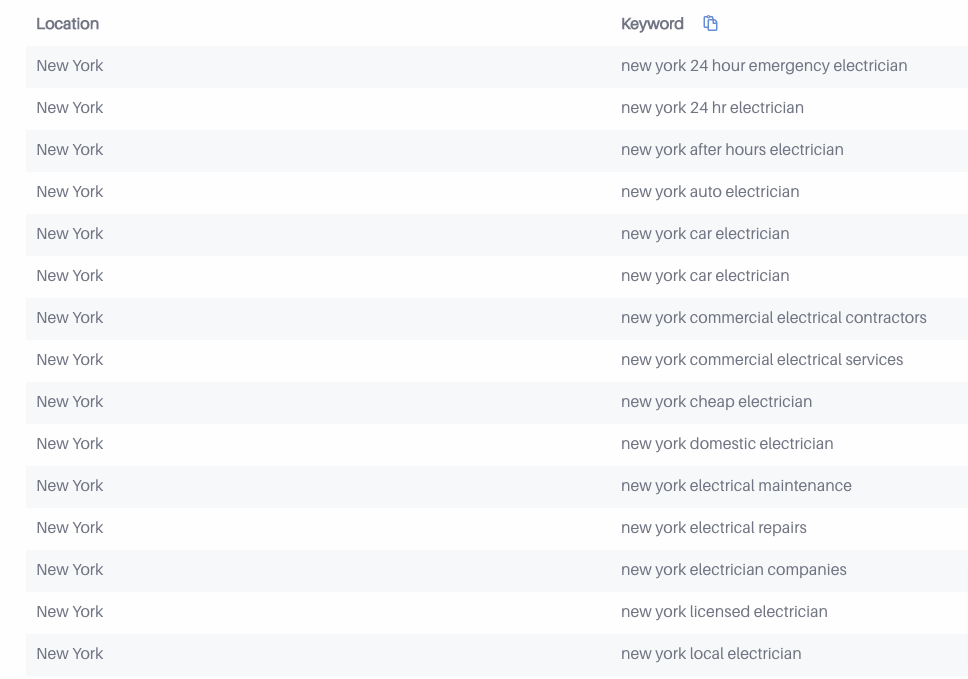
3.3- Yelp Suggest
Yelp works like Google Suggest. At first, you need to create an account in Yelp.
Enter your Business Name, Address, Category, Phone Number, Website Address (if any), and Email ID to create your Yelp account.

After creating your Yelp account, type a keyword that someone in your area might use to find your business.
It will show you a list of the results. These are your competitors as well. So, check all the keywords from this list and use these keywords to optimize your local business.
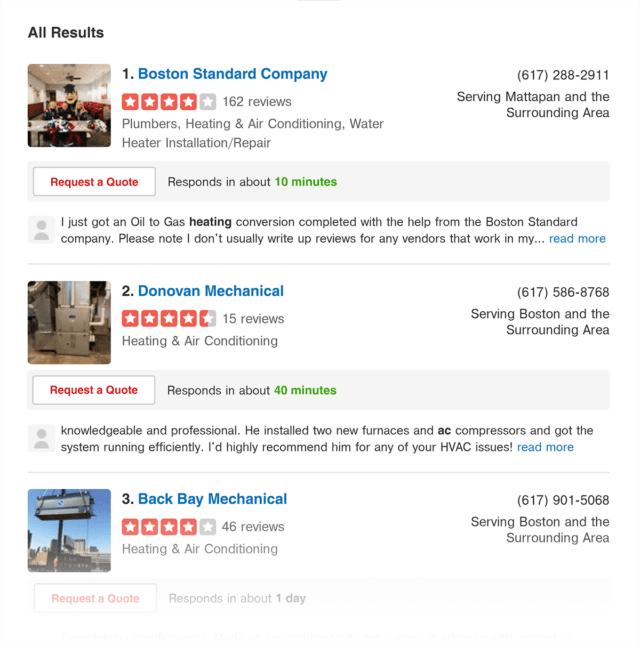
Chapter 04: Optimize Your Business for Local Voice Search

Voice search is slightly different from the usual Google search. Because they’re more natural, voice searches also tend to be longer than text-based queries.
Let's assume, you want to search for a washing machine. When you search it on Google, you just write “washing machine” and press enter button to see the results.
On the contrary, when you go for voice search, it usually becomes “suggest me some of the best washing machines beside me”. That's the basic difference between normal Google search and voice search.
As the number of mobile phone users is getting increased massively every day, so, optimizing your local business for voice search would be a smart move.
That is why now we are going to show you how you can effortlessly optimize your local business for voice search.
4.1- Create Scannable Content
Scannable means your content should be easily readable. To create popular content use simple sentences, short paragraphs, and bold headers to break up your content as much as possible.
People who are searching the internet on their mobile devices are looking for content that’s been optimized for this platform. Make sure your content is easily readable, scannable, and doesn’t have any annoying pop-ups or ads that could hinder them from getting the information they need.
4.2- Claim Google Business Profile Listing
We have already discussed how to optimize your local business for the Google Business Profile listing. Not only Google Business Profile, but we have also shown you the ways to optimize your business for Apple Maps and Bing Places. So, see that section to get your job done.
4.3- Focus on Long-Tail Keywords
As we have discussed earlier that people use more “natural” keywords when using voice search, so targeting long-tail keywords is a must. To do this, you must “think how people speak.” How would you ask particular questions? Or what kind of spoken questions might bring others to your site?
This might be a different kind of long-tail than you’re used to. It’s more about real speech and less about keyword variations. You need to know and target as many variations as possible.
If you're wondering how would you find those long-tail keywords, don't worry. There are free web tools to help you out. Answer the Public is one of them. Just enter your main keyword there, it will give you lots of long-tail keywords related to your search term.
4.4- Create FAQ Page
Another great way you can use the customer and SEO data you’ve collected is to create FAQ pages that focus on those long-tail keyphrases. Try to group common questions on the same page, and write as naturally as possible. If you need to create multiple pages to sound more natural, go with that approach.
You should also add some quick questions and answers to your blog to satisfy Google’s rich snippet requirements. It's another technique to optimize your content for voice search.
Chapter 05: Optimize On-page SEO for Your Local Business
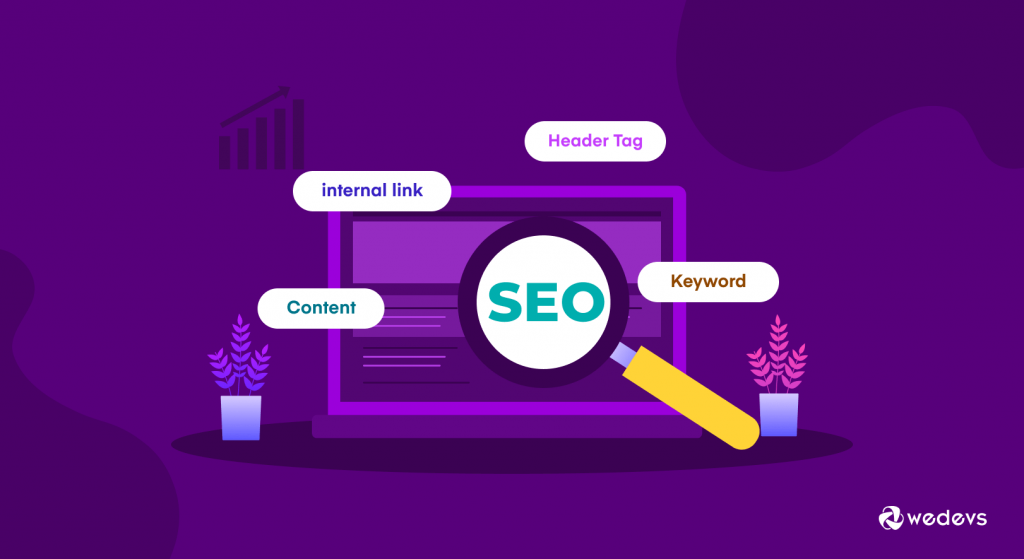
On-page SEO is one of the most crucial local business SEO tips. It helps you to get better rankings for the local keywords that your target audience is looking for. There are a few major things that you’ll want to make sure of while optimizing your on-page SEO. Let's focus on those major things.
5.1- Create High Quality and Long Content
Content is the main powerhouse for on-page SEO. It needs to be high quality so that it can serve the people who are looking for the solution of their specific problem. The first step to creating high-quality content is choosing relevant keywords and topics.
Once you're done with the keyword research, start writing the content and make sure it's long enough to convince Google that you've offered more information than your competitors. It should be on an average of 2000 words per article.
Before you decide on the optimum length for your content, Google your primary keyword and visit the top 10 results in the SERPs. Are some of those pages longer than 2200 words? Then yours should be, too.
Break your text into short sentences when writing and insert images to break paragraphs into sessions. If your content is always the same, with huge blocks of text and nothing to relieve this visual distress, it may be discouraging for your audience.
Consequently, it will give you a higher bounce rate and reduce the time your users spend on your site, which means fewer opportunities for converting your visitors into customers.
5.2- Create More Local NAPs for Your Local Business
We have already discussed what is NAP, how to run a NAP audit, and how to create more NAP citations for a local business. See that section to get your job done.
5.3- Optimize the Title, URL, and Meta Description
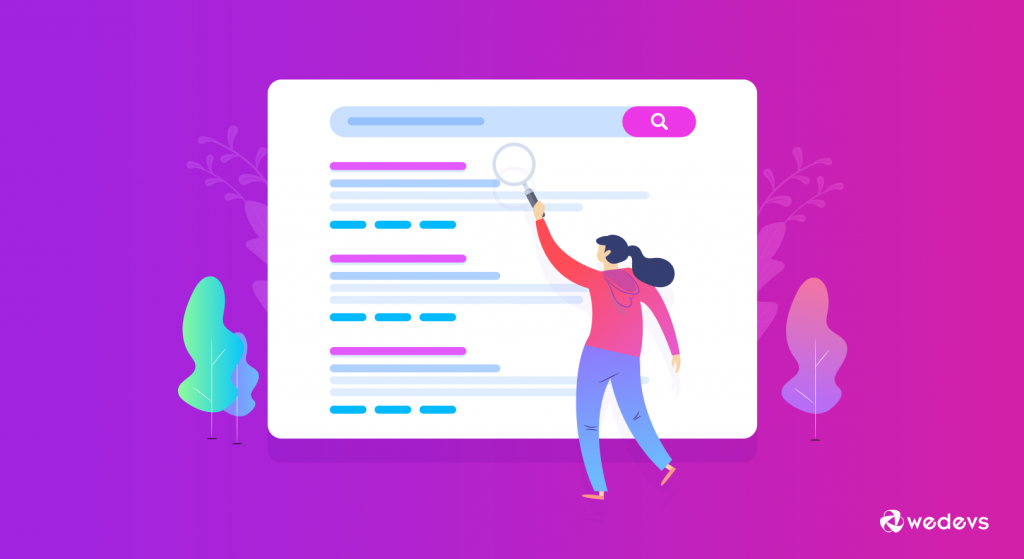
In order to show your website in search engine results pages (SERPs), Google has to know what your page is about. Using specific keywords in the title tag of each page makes it easier for search engine crawlers to understand your website.
For example, if you’re targeting the keyword, “dog food Chicago,” you may create the following title tag: “Best Dog Food in Chicago City | Company Name.”
To ensure your site pages rank for the proper intent, be sure to include the focus keyword for each page in the title. Incorporate your keyword as naturally as possible. Then add your site name or company name with a separator sign after the title.
And keep your title under 70 characters, any longer and your title will be cut off in search results. Mobile search results show up to 78 characters. So try to follow this rule while creating any of your page titles.
Your page URLs should be simple to digest for both readers and search engines. They are also important when keeping your site hierarchy consistent as you create subpages, blog posts, and other types of internal pages.
Don't forget to remove the extra and unnecessary words from your URLs to get a better result. And use only one or two keywords in each of your URLs.
A meta description doesn’t influence your on-page optimization directly. It’s a feature that helps users, however, learn more about your page. The fact that Google will bold user search terms that appear in your meta description is another reason to optimize your meta description for on-page SEO.
Include your core and related keywords in your meta description for the best results. For the best results, your meta description should stick to 160 characters.
5.4- Include Clear Calls To Action
Not only do you want people to visit your website, but you also want them to convert! Make sure that your phone number is clearly and prominently displayed and there are easy ways to contact you. Guide the user and use CTAs to tell them what to do next like call you, contact you, or ask you about any specific product or service.
5.5- Internal and External Linking

Linking is very crucial for on-page SEO optimization. You may have heard that internal linking doesn't have that much impact on ranking. But the truth is internal is also a ranking factor for search engines.
For internal linking, you can use any of your website's pages or blogs to link. However, don't link any irrelevant content just for increasing the number of links. For example, if your content is about “Dog food”, don't link to some content that is about sports.
Another tip for internal linking is to take at least 3 words as anchor text. Your anchor text should be self-explanatory. So that your readers can guess the content you have linked.
For external linking, try to link to some high authority website. To understand if it's a high authority website, check that site's Domain Authority, average monthly visitors, and the number of backlinks. Don't make every external link do-follow links, try to make it no-follow if it's your competitor.
5.6- Image Alt-text
Alt-text is like SEO for your images. It tells Google and other search engines what your images are about.
Every day hundreds of thousands of images are being uploaded to Google, so without an alt-text, it's tough to determine for Google what's your image is about. Hence, Google doesn't rank images without alt-texts.
Here's what to keep in mind when adding image alt-text:
- Smartly blend your main keyword with the image alt-text, if not possible, use LSI keywords for your main keywords. And don't go for keyword stuffing.
- Make it descriptive and specific.
- Keep it shorter than 125 characters.
Last but not least don't upload any image without optimization. There are free image optimization web tools like tinypng for optimizing your images effortlessly.
5.6- Increase Page Speed

Page speed determines how fast your page content loads.
As per the research, 50% of users will abandon a page if it takes longer than three seconds to load. People want information, and they want it now!
To increase the page speed of your site, you can follow these steps;
- Choose a Quality Web Hosting
- Keep Your Site Up to Date
- Choose a Speed Optimized Theme
- Optimize Your Database
- Decrease Server Requests
- Use a Content Delivery Network (CDN)
- Enable Gzip Compression
- Minify CSS and JS Files
- Deactivate Unused Plugins
If you are not sure where from you should measure your site speed, you can use any of the below-mentioned free web tools to get your job done.
These free tools are used extensively across the web.
5.7- Make It Responsive (Mobile Friendly)
Google started favoring sites that are optimized for faster mobile speeds, even for desktop searches. Mobile responsiveness matters. Also, it's a ranking factor for Google.
If you're not sure about your own site's mobile readiness, use Google's Mobile-Friendly Test tool.
If your website isn't mobile-friendly yet, you should consider a website re-design or updating your WordPress theme.
5.8- Add Schema Markup to Your Pages
Schema markup is a part of technical SEO. However, it's important for on-page SEO as well. It is the key behind those featured snippets, knowledge panels, and other content features you see when you search for something on Google.
There are hundreds of different types of Schema markups. The right ones for your business will depend on what information is most critical to your customers.
If most of your customers call you, then you will want to use the telephone markup. Other popular markups for local businesses include:
- Opening hours
- Currencies accepted
- Price range
- Address
- Aggregate rating
- Area served
- Logo
- Reviews
The most manual process is to use the coding from Schema.org and adjust it to fit your site. Navigate to Schema.org, which offers a complete listing of all the markups available. Head to their list of markups here, then select the Schema you want to use.
For example, if you want to tag your opening hours:
- Select Local Business from the main list of Schemas
- Select the opening hour
- Choose one of the example texts that most closely matches your information
- Select which format of Schema markup you want to use (remember JSON-LD is Google’s recommendation)
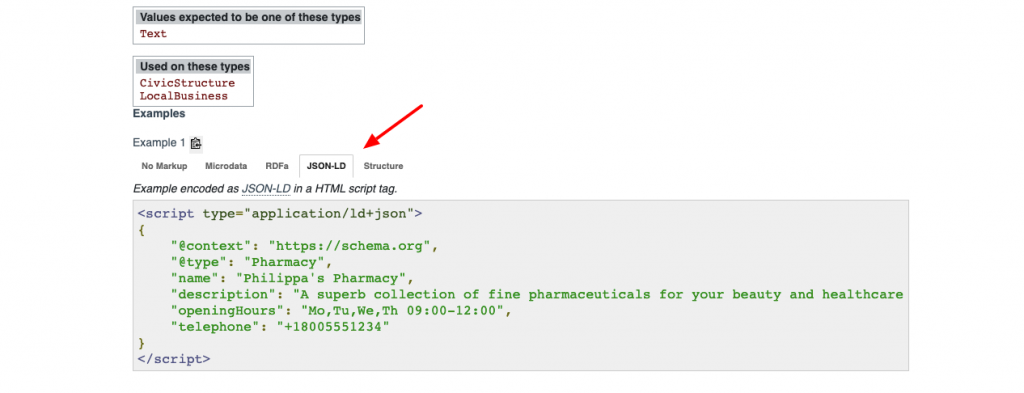
- Copy and paste the code into notepad or a similar text editor
- Adjust the details to match your site
- Copy and paste into your site’s HTML head section.
Then, repeat this process for each section you want to markup.
The simplest method to add Schema markup to your site is to use a Schem[a plugin. It will automatically add markup in the JSON-LD format. It requires very little work, which is ideal for site owners who don’t have coding knowledge or the time to mess with code.
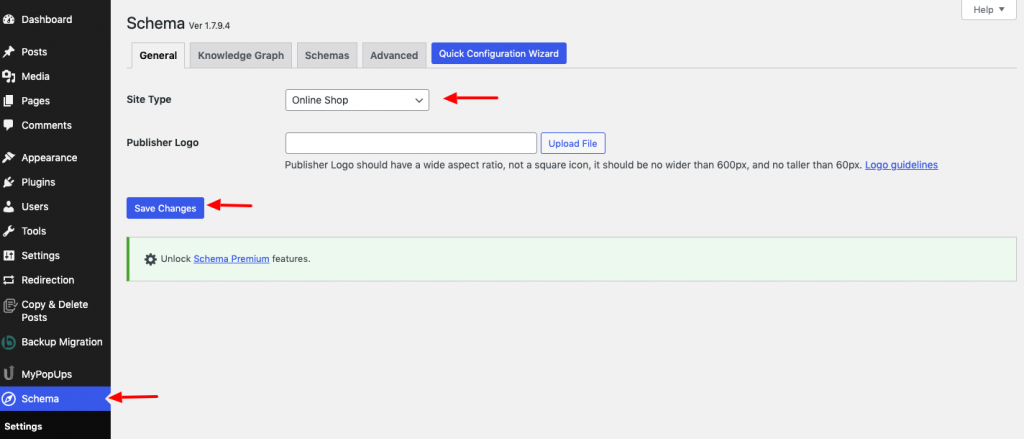
After installing and configuring the plugin, you'll see the Schema option on your left sidebar. Click here to generate and add schema markup for your website.
5.9- Embed a Google Map
Each location landing page should have an embedded Google Map based on the business address. Embedded maps can be easily re-sized to fit around copy on the page and not only does this provide a good user experience, but it also provides Google with vital local-based information about your organization.
When setting up this feature, make sure that your address matches that of your Google Business Profile listing.
Chapter 06: Prepare a Link Building Strategy for Earning More Backlinks
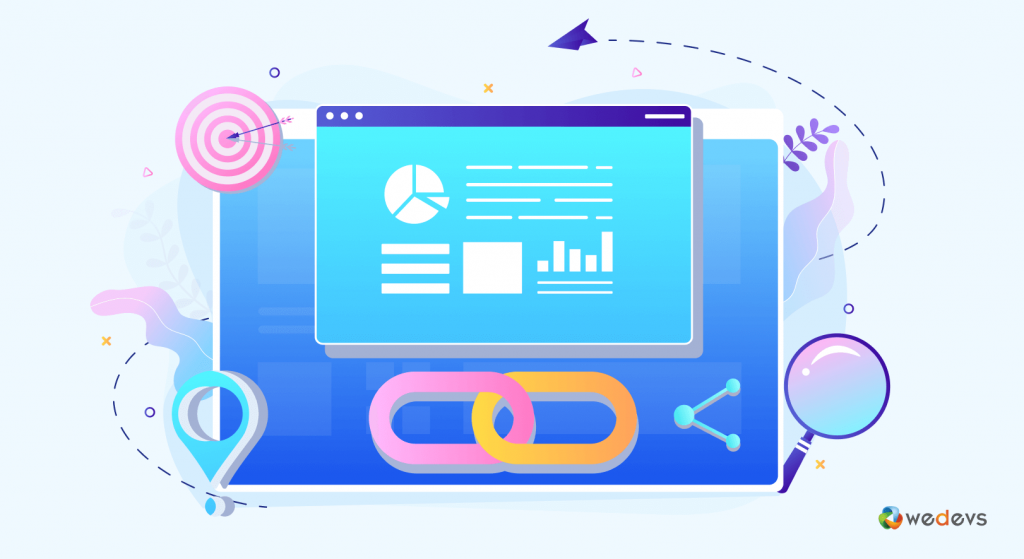
When we are talking about local SEO optimization, link building can not be ignored, not at all. Backlinks from 2-3 high authority websites can do much more for your search engine results than your imagination.
What distinguishes local link building from general link building is its specificity. You should aim to place your links in more locally targeted resource listings and blogs.
Though link building has always been a tough job, but not impossible. Now we are going to talk about how you can earn more backlinks as a local business owner.
6.1- Create High-Quality Content
Create high-quality content on your site so that others want to link to your content. There are certain types of content that get more shares and backlinks than others. These are;
- How-to guide that means step-by-step tutorial
- Listicle blog, e.g., best 10 dog foods recommended by vets
- Definitive guide that describes everything about a topic
- Statistics post that shows different kind of authorized data
Don't create content that is not related to your niche. Ultimately, it ain't create any value for your business. So, always try to stick with your niche, and if you can show more information than your competitors, you'll get backlinks automatically from numerous sources.
6.2- Create Natural Looking Guest Blogs
Guest blogging has always been a common option for link building. And, it is expected that it won’t lose its importance anytime soon. This would mean that you will be writing for other websites, and they will be linking to your website as a means of reciprocation.
But before writing for others, make sure your content matches their niche. Never approach them with content that doesn’t serve the same purpose that your intended site has.
If you're wondering how to find your target website that accepts guest blogs, follow the below tips to get your job done.
- your keyword + write-for-us
- your keyword + guest-posts
- keyword + guest-post-guidelines
- your keyword + become a contributor
- your keyword + bloggers wanted
- keyword + submit an article
- your keyword + want to write for
- your keyword + contribute
- keyword + become an author
- your keyword + guest post by
- your keyword + now accepting guest posts
Go to Google and search following these formats, you'll find your target websites easily.
6.3- Enlist Your Local Business in an Online Business Directory
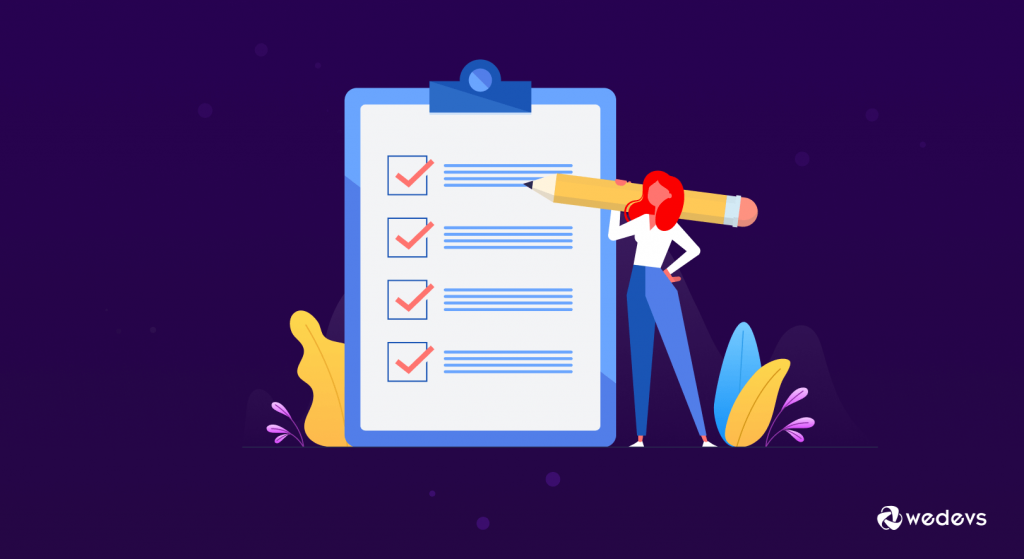
Every business directory contains an index of companies listed alphabetically by industry. The individual entries are then often linked to the corresponding company’s website. The business directory helps users search for companies, services, or products in their area in a more targeted way.
To improve your local SEO, all you have to do is list your business in online business directories such as Yellow Pages, Manta, and more.
Whitespark local SEO tool has created a list of the top 50 local citation sites by country that you can refer to.
If that comprehensive list fails to cover everything you need, you can also find more local leads by mining on Google.
Below are combinations of queries you can use for business listings and directories:
- [location] business listings
- [location] business directory
- [location] directory
- [business type keyword] business listings [location]
- [business type keyword] business directory [location]
- [business type keyword] directory [location]
For trade organizations:
- [location] [business type keyword] alliance
- [location] [business type keyword] association
- [location] [business type keyword] council
- [location] [business type keyword] society
Go to the Google search engine and type your query following the above-mentioned combinations, you'll get the directory to list your local business.
6.4- Other Strategies to Get Local Links
Apart from these strategies, you can also follow the below-mentioned local SEO tips to get backlinks.
- Partner with charities, non-profit organizations, or schools. Offer services, sponsorships, scholarships, or even an office space to host their events.
- Participate in or spearhead community events.
- Mine your connections to set up an interview with prominent local figures then pitch it to your local newspapers.
- Network with local bloggers and other small businesses in your area. Choose which ones are the most relevant connections, and open up a link or promotion exchange.
- Give interviews related to your local business if there is any chance available.
Hopefully, this set of hacks will help you to get backlinks for your local business.
Chapter 07: Get Reviews from Your Happy Customers

Getting your customers to write glowing reviews for your business doesn’t just optimize your Google Business Profile presence; it also encourages more local customers to buy from you.
According to a recent local consumer reviews survey, around 87% of people trust online reviews as much as personal recommendations
Let's assume you are a customer. When you want to buy food which kind of restaurant do you prioritize? Restaurants with higher user ratings, right? So, users' ratings are very crucial for local businesses.
A study cited by marketing resources firm econsultancy found that having reviews on sales pages can increase conversions by 18%.
So when you improve your online reputation, you get a vote of consumer trust, a boost in search rankings, and a chance for increased conversions.
7.1- Ask for a Review in Person After the Close of a Sale
After closing a sale if your customer seems satisfied, tell him how much an honest review would be appreciated from your end. It helps to get reviews in real time. Ride-sharing service Uber uses this trick to collect reviews from users for their riders.
When you have a queue of customers waiting for your service don't ask for reviews. It could disturb them. Instead, when you have the opportunity to talk to your customers in person or over the phone you can ask them for reviews if no one is besides to feel disturbed. And don't be rude if they ignore you.
7.2- Share Your Top Reviews Through Social Channels
Another way to get more online reviews is to share the glowing reviews you’ve already received. When others see that people are leaving you great reviews, they’ll be more influenced to review your service.
According to Psychology Today, people look at what others are doing to learn what’s correct.
Following this tactic, you'll be able to target two birds with a single stone. That means it will help you to generate more online reviews for your business, and it will also help to advertise your business at the same time. That could attract more customers to your business.
7.3- Respond to All Reviews As Soon As Possible
Responding to every review on time is very crucial. When people see that you respond to every review, good or bad, it gives the impression that the business truly cares about consumer sentiment. Thus people get the motivation to review a service or product.
When asking people to review you online, you open yourself up to bad reviews, too. Bad reviews have some good sides as well. It helps make your brand more authentic. How?
Well, if all the reviews are sunshine and rainbows, there’s almost always something fishy. People would start doubting the authenticity of those reviews. So, if you get some bad reviews, unfortunately, don't be upset.
To avoid bad reviews and turn those reviewers into your loyal customers, you can follow these steps:
- Respond as quickly as you can.
- Acknowledge your mistake.
- Explain your point of view courteously.
- Write a meaningful and personal apology (even if you think it’s not your fault).
- Provide an immediate resolution or compensation (such as a refund, voucher, etc.).
Hopefully, these will help you to get more good reviews about your local business.
7.4- Make Use of Your Social Channels
Create social channels for your local business. Then use these channels to show your reviews and testimonials. It helps people to know more about your business.
Create a social media community in your local area and engage often, offering solutions and/or entertainment. Being present in your local community online helps you promote content and attract customers.
Thus you can earn reviews as well.
7.5- Other Criteria for Getting Reviews from Your Customers
Here we are going to share some more tactics that could help you to earn reviews from your happy customers.
- Integrate your Google Business Profile review link into your email marketing campaigns. Use your email signature to ask your customers to leave reviews.
- Make it a part of your training to teach all customer-facing staff to ask for reviews from customers, especially where customers seem to be satisfied.
- Write personal emails that request reviews. The context of the personal email should make it clear that the email is not mass-produced.
- Send a post-purchase email or text asking customers to write a review.
So, these are the local SEO tips for optimizing your local business. Now we are going to talk about the best local SEO tools that you can use for your business to handle your local SEO in a hassle-free way.
Best Local SEO Tools for Local Business Owners in 2024
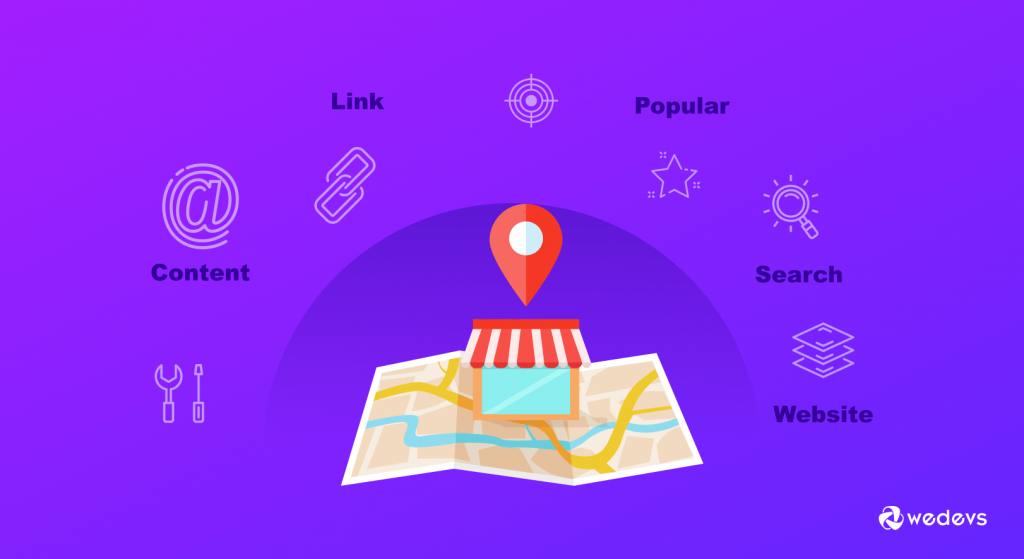
Local SEO tools are incredibly important for businesses to track, measure, and analyze their efforts behind local SEO optimization. If you are running a local business with a small team, you can rely on local SEO software to optimize your business.
Local SEO tools can help track rankings, provide competitor insight, assist with developing SEO-optimized keywords, monitor performance, and encourage customer engagement.
To help you out in choosing the best local SEO tools in 2024, we have prepared this list for you. So, let's get started with the list.
1. Moz Local
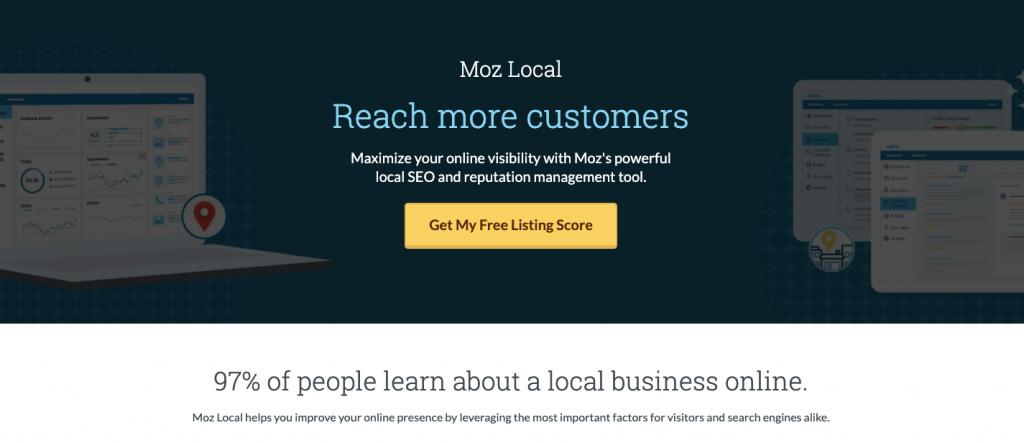
Moz Local developed by Moz is perhaps the most popular local SEO tool to optimize your local business. It helps you to boost the local visibility of your business and ensures that your business listings are correct, consistent, and visible across the web.
Moz Local is an ideal local SEO tool to rely on as it places the correct business location details of your business on various data aggregators and online directories. Using this tool, you can easily find out if there are any duplicate business listings for you and then fix them.
Key Features of Moz Local
- Local listing dashboard
- Instant directory and aggregator submission
- Google Business Profile listing
- Real-time update distribution
- Distribution reporting
- Review monitoring
- Review management for Google
Pricing: Starts at $14 per month.
2. BuzzStream
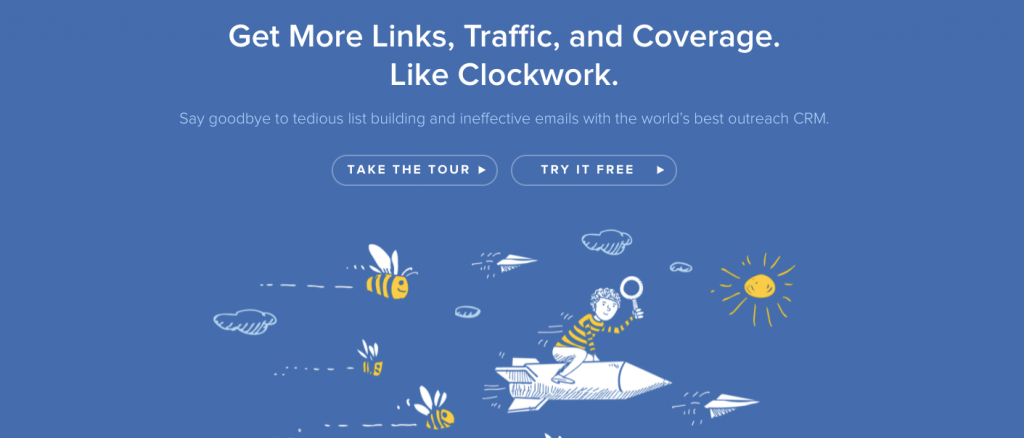
BuzzStream is not like other typical local SEO tools. Mainly it is used to generate links, monitor links, and track Twitter and email conversations. It makes outreach easier than using manual email or even email marketing tools.
People use it for prospecting link opportunities and building inbound links to your small business website, improving local SEO. This tool also assists you to evaluate your team performance, campaign progress, and email effectiveness.
Key Features of BuzzStream
- Very beginner-friendly
- Helps to build online NAP citations
- Create link prospecting lists
- Send outreach emails
- Track conversations on Twitter and email
Pricing: Try BuzzStream free for 14 days. Pricing ranges from $24 to $999 per month. You can pay as you go or choose to pay annually to get one month free.
3. BrightLocal
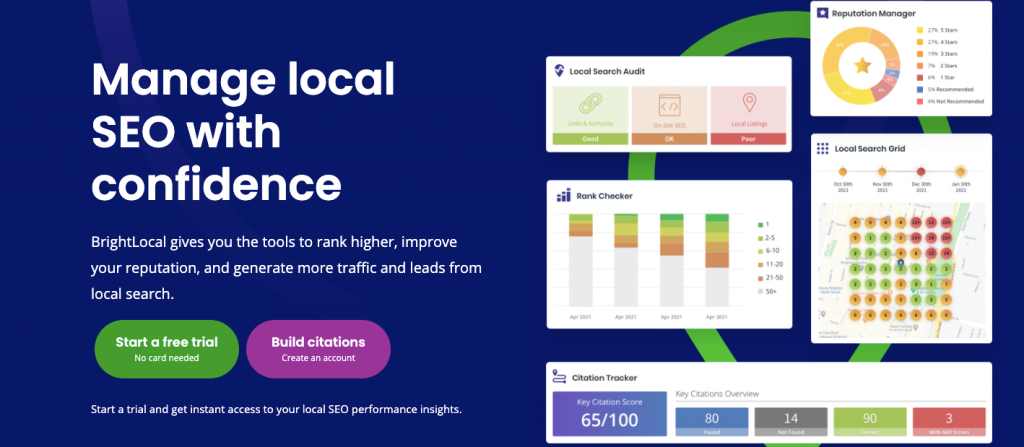
BrightLocal is another top popular SEO tool for local businesses. It’s an all-in-one local SEO tool that audits SEO from all possible angles of your business. This local SEO tool takes care of your business's on-page or off-page SEO, local search, social media, and so on.
You can track your business’ ranking in three top search engines, mobile, and maps, as well as manage your directory listings and monitor your reviews across the web.
Key Features of Brightlocal
- Intuitive and robust dashboard
- See rankings from Google, Bing, and Yahoo!
- Affordable citation building by BrightLocal staff
- Monitor and respond to reviews
- Track online citations
Pricing: BrightLocal offers a 14-day trial, so you can try out its features and see if you like the interface. If all you want is reviews management, there’s a reviews-only plan that’s $8 per location, per month. For the full suite of tools, BrightLocal costs $24.17 to $65.83 per month, if paid annually.
4. Whitespark
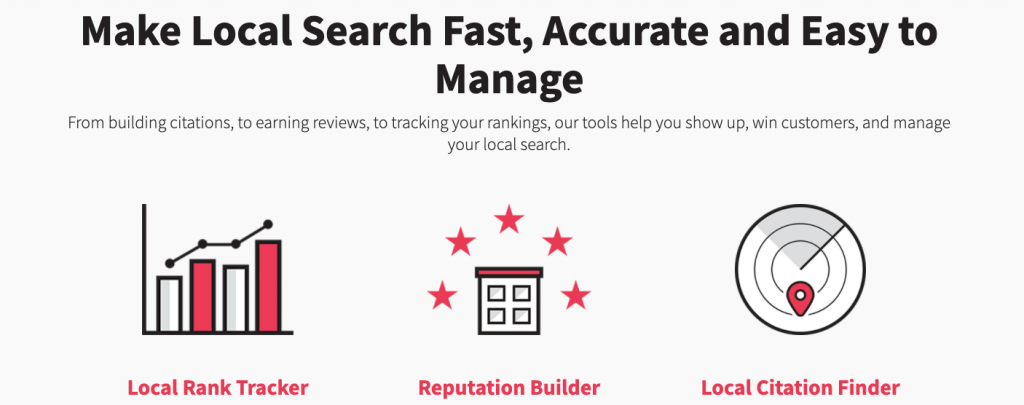
Whitespark is an all-in-one local SEO tool for optimizing your local business. From building citations, to earning reviews, to tracking your rankings, Whitespark helps you to show up, win customers, and manage your local search with ease.
Whitespark comes with a super-easy user interface and as a beginner, you will understand every feature of this tool. That's the unique part of Whitespark- you don't need any experience to get started with this tool.
Key Features of Whitespark
- Local rank tracker for Google and Bing
- Reputation builder to grow your online reviews
- Local citation finder and builder
- Yext replacement service for new local listings to enhance your online presence
- Google Business Profile service to increase phone calls, bookings, and website visits
Pricing: Starts at $20 per month for small businesses.
5. Local SEO Checklist

If you don't have the intention to pay for a local SEO tool right now, you can use the Local SEO checklist for optimizing your business. This free Local Search Optimization tool, powered by Synup, offers 40 different options that detail specific SEO tasks to help you optimize your site for local search rankings.
You can use this Local SEO guide for WordPress developers to know exactly what parts of your site you need to optimize for local searches. In addition to the checklist, you can also access the following free resources:
- Schema Scanner: It helps to find out whether you have relevant schema marked up content and get a list of pages that do not have schema installed.
- Google Checker: You can use this tool to see if your business listing meets Google Business Profile guidelines.
- Small Business Checklist: Small Business Checklist is a comprehensive list of common tasks that all aspiring entrepreneurs must do in order to materialize their business idea.
Key Features of Local SEO Checklist
- Offers on-page SEO optimization features
- Helps to create a Google Business Profile account
- Provides top business directories like Bing, Yelp, and many more for being listed
- Helps to build online citations
- Enables to generate more reviews
- Lets you earn backlinks for your local business
Pricing: Free.
A Few Common FAQs on Local SEO Tips
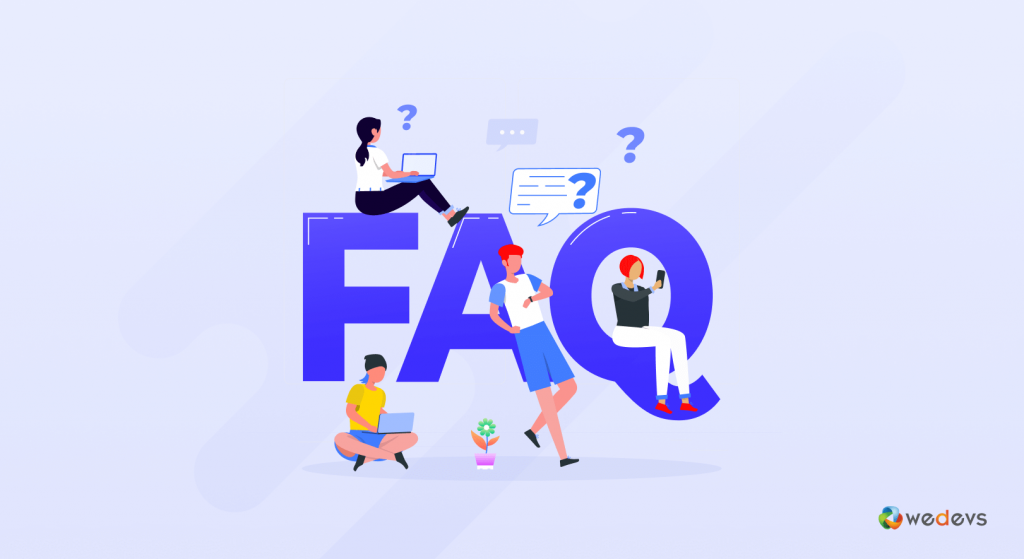
Now in this segment, we will talk about the most frequently asked questions about local SEO tips. Here you'll find 10 FAQs with to-the-point answers.
1. What is a local SEO strategy?
Local SEO strategies are the processes of optimizing your online presence so that people can easily find you through relevant local searches. Google and other search engine use the users' geolocation and search keywords to determine what to show the users.
2. What kind of business need local SEO?
Every service area or brick-and-mortar store owner can grow their businesses and attract more customers with local SEO. Among them, top businesses that need local SEO badly are;
- Medical services or pharmacy
- Hotel and Restaurant
- Law office
- Plumber
- Pet service
- Real state
- Electronics store, and so on.
3. How do you know if you need local SEO?
If you have a local business and your customers are from your surroundings, you need local SEO optimization to get more customers.
Wrapping up the Local SEO Guide
Before signing off let us thank you for coming this far with this definitive guide on local SEO tips. We have done our part. We have shared every single point of local SEO so that you can optimize your local business following this step-by-step local SEO guide.
Now it's your turn to apply all these local SEO tips for your business. Remember it's not an overnight task, instead, it needs your patience, consistency, and determination to get success with local SEO. So, good luck with that, and congratulations in advance on your success.
If you face any complications while optimizing your local business following these local SEO tips, you can let us know through the comment box below. We would be more than happy to help you out.

